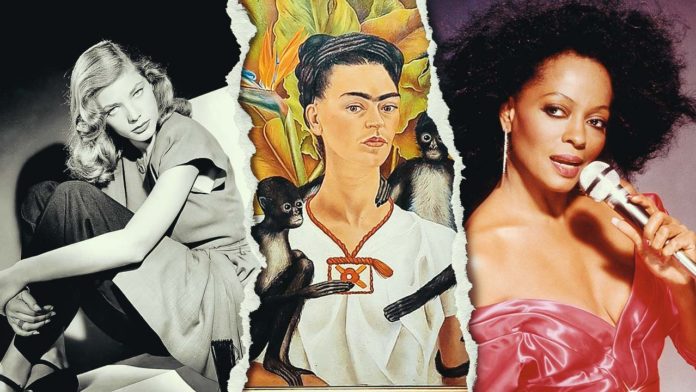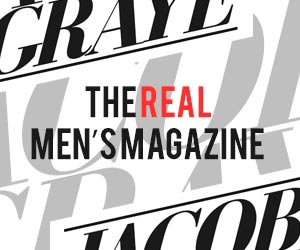Sappho (630 BC-570 BC)
A lyric poetess of the ancient Greece era, this first of our 50 most popular women of all time was perhaps the first writer to achieve fame with words. Much of her work has been destroyed by time and circumstance, but her prowess lives on in snippets and sculptures. Contemporaries like Solon and Plato considered her “the twelfth muse.”
Cleopatra (70 BC-30 BC)
True origin of the ‘femme fatale’ trope, Cleopatra’s name conjures glamor and seduction, perhaps thanks to her film portrayal by another one of our 50 most popular women of all time. The iconic leader ascended the Egyptian throne after her father’s death. Savvy as she was sexual, Cleopatra influenced Roman politics at a pivotal moment in history.
Empress Wu Zetian (624-705)
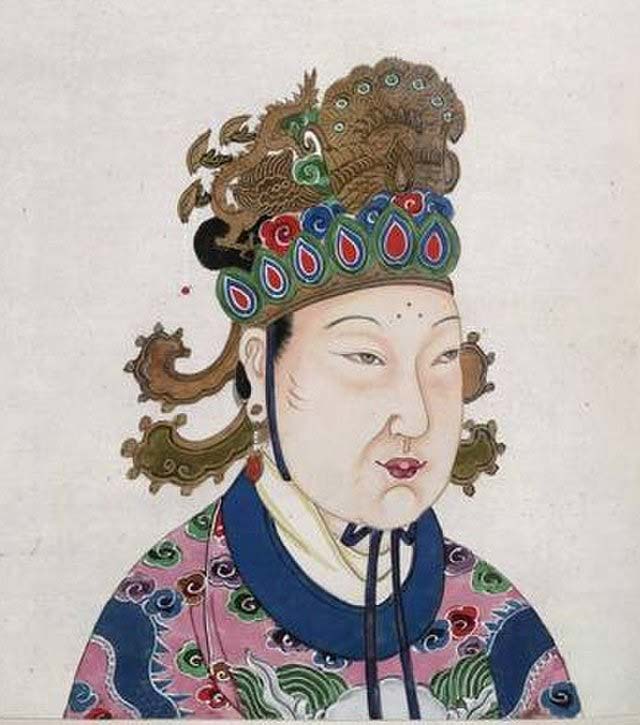
The only female emperor throughout China’s history, Wu Zetian began as a mere concubine to the emperor Taizong. After Taizong’s death, she married his son, and served as empress dowager after his death. Wu Zeitan then declared herself China’s de facto ruler, a position she held uncontested for fifteen years.
Joan of Arc (1412-1431)
Joan of Arc still reigns as a paragon of bravery. This French peasant girl became a national heroine by age 18 divine guidance helped her lead the French army to a victory that prevented English conquest during the Hundred Years’ War. She was captured a year later by the English and their French collaborators, who had her burned at the stake for heresy.
Anne Boelyn (1501-1536)
King Henry VIII of England lusted after Anne Boely so aggressively that he separated his whole country from the Roman Catholic Church, triggering the English Reformation, just to secure an annulment from his wife. While the idea of Anne Boelyn still fascinates history buffs today, she didn’t last so long in the flesh. When she failed to provide Henry with a male heir, he had her sentenced to death.
Catherine the Great (1729-1796)
This Russian empress built upon the work of Peter the Great by maneuvering her nation into the fold of greater European cultural life. She reorganized and streamlined the structure of the Russian law and government while extending the country’s empire to include Poland and Crimea. Catherine was a natural born ruler enamored of ambition and the adopted land she called home.
Sacagawea (1788-1884)
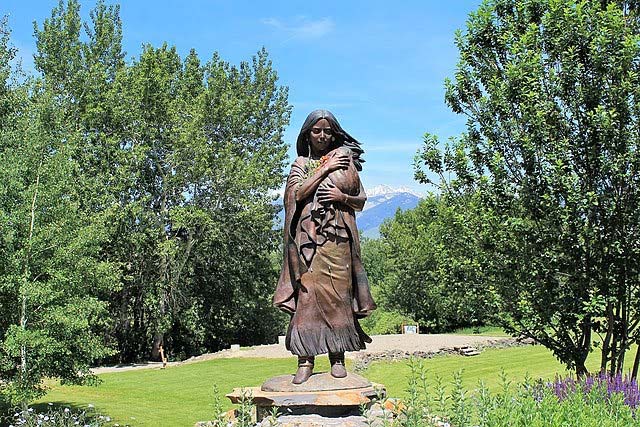
At eighteen years old, this Shoshone Native American woman embarked upon a thousand mile journey through the American wilderness alongside colonizing explorers Lewis and Clark. Without Sacagawea’s assistance on interpretation, their success would have likely floundered. History has left her biography riddled with fictions, but this sense of mystery, in a way, contributes to her popularity further.
Susan B. Anthony (1820-1906)
An icon of the women’s suffrage movement, Susan B. Anthony also advocated for temperance, abolition, and workers’ rights. Anthony grew up in Massachusetts, where she took to the Quaker beliefs that raised her–most notably, equality for all. A smart strategist and successful leader, she also co-founded the influential American Equal Rights Association. She died 14 years before women were given the right to vote.
Clara Barton (1821-1912)
Clara Barton lived before nursing school was formalized, so her methods were largely self-taught. She began her nursing career tending to soliders during the civil war. After the devastating experiences, Barton travelled America delivering lectures, and spearheaded the American branch of the International Committee of the Red Cross.
Marie Curie (1867-1934)
As the physicist and chemist who coined the phrase “radioactive,” Curie ranks one of the most famous scientists throughout history, regardless of gender. She grew up in Warsaw, Poland, where she studied at the city’s clandestine Flying University. At 24, she moved to Paris and married Pierre Curie, the colleague with whom she shared her first Nobel Piece. She was the first person and is the only woman to have won the prize twice, and the only scientist to claim it in two disparate fields of study.
Colette (1873-1954)
Colette’s writing thrilled readers and theatergoers alike, but even the revolutionary period she lived through didn’t save her from injustice. Colette famously spent the first portion of her career under the control of her husband, who kept the royalties she was rightfully owed. After 1930, Colette liberated herself. Her works provide a sensuous, addictive record of the emotion.
Coco Chanel (1883-1971)
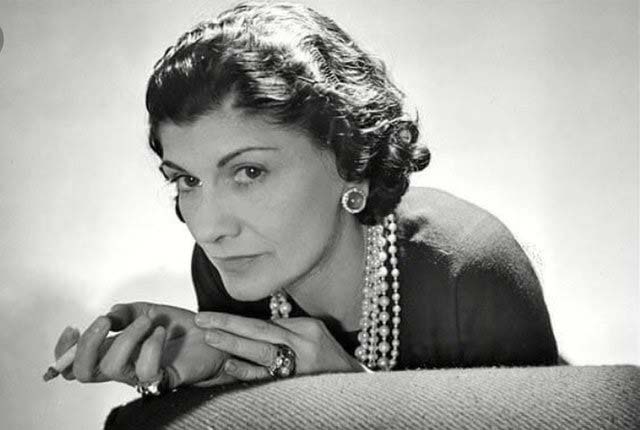
Many know her name from that ubiquitous logo of interlocking C’s, but Chanel’s association with luxury obscures her hardcore rags-to-riches story. Gabrielle ‘Coco’ Chanel grew up in an orphanage after the death of her mother and absence of her philandering father. She leveraged the novelty of her slim frame and mocking eyes, igniting lucrative affairs with a few maverick men who provided the seed capital for her business. Chanel left an irrevocable mark on style and paid her benefactors back in full.
Georgia O’Keefe (1887-1986)
After studying at the Art Institute of Chicago and the Art Students League in New York, O’Keefe began focusing on abstract charcoal drawings. She sent some of these works to a colleague in NYC, who shared them with infamous gallerist Alfred Stieglitz. Not only did he begin showing O’Keefe’s work in 1916, but the two also wed. Three years after his death, O’Keefe moved to New Mexico and began painting the flowers and cow skulls she’s known for today.
Bessie Coleman (1892-1926)
Bessie Coleman grew up in Waxahatchie, Texas, where her intellect rescued her from agricultural work. She attended college in Oklahoma and later moved to Chicago, where she became interested in aviation. She couldn’t fly at American schools due to discrimination, so she learned French and purused her studies in France. Barred from an American career in commercial flight because of her gender and race, Coleman took up stunt flying.
Mae West (1893-1980)
Mae West was a new kind of silver screen starlet, one whose wit drove her sex appeal. Many know the actress for her aphorisms: “When I’m good I’m very, very good, but when I’m bad, I’m better.” It wasn’t all gold gowns and champagne, though. West first achieved success writing and starring in her own Broadway plays. In her first show, Sex, Mae played a prostitute and served eight-days in jail for “corrupting the morals of youth.”
Estee Lauder (1906-2004)
Estee Lauder learned business in her father’s hardware store. She discovered her path during World War I when her uncle, a European skin specialist, came to stay with their family. With his guidance, Lauder learned to mix cosmetics and innovate new offerings. She and her husband founded Estee Lauder, Inc. in 1946 with a marketing budget so small that no agency would take it on. Their cosmetics are immediately recognizable around the globe.
Frida Kahlo (1907-1954)

The iconic unibrow belonging to this one of the 50 most popular women of all time can be found on tote bags and Halloween costumes. Frida Kahlo was a Mexican painter today famed for her self-portraits. In her own era, Kahlo was a leftist outsider who’d been struck by a bus at fifteen and married to a muralist far more famous than her. Her sometimes difficult but always passionate life proved her earnest contemplations of the self never went in vain.
Rosa Parks (1913-2005)
Perhaps the second most prominent face of the Civil Rights Movement, Parks’s bravery ignited the powder keg in Montgomery on December 1st, 1955, when she refused to relinquish her bus seat. Parks was an activist long before that fateful day. She’d been a member of the Montgomery chapter of the National Association for the Advancement of Colored People (NAACP), and she served as its secretary until 1956.
Edith Piaf (1915-1963)
Piaf survived a harrowing childhood–abandoned by her mother at birth, raised in a brothel, blind for four years due to meningitis. In 1935, one cabaret owner gave her a nightclub gig and a nickname: la môme piaf, the little sparrow. That same year she made her theatrical debut. Today she’s one of the most popular women of all time, venerated around the globe.
Billie Holiday (1915-1959)
Billie Holiday is history’s greatest jazz singer. While Holiday’s ephemeral voice was limited in its range, her supernatural emotional depth rendered her singing otherworldly. She took her first NYC gig in 1928–her voice moved patrons to tears. Holiday never achieved true commercial success, but the very famous Frank Sinatra called her “unquestionably the most important influence on American popular singing in the last twenty years.”
Toni Morrison (1931-2019)
Born and raised in a hard working Ohio family, this celebrated writer, editor, and professor went on to win both a Nobel Peace Prize and Pulitzer Prize. In 2007, the New York Times named her novel ‘Beloved’ the best work of the past 25 years. Beyond her unforgettable fictions, Morrison also wrote nonfiction, a libretto, and crafted educational programs for students looking to follow her path.
Lauren Bacall (1924-2013)
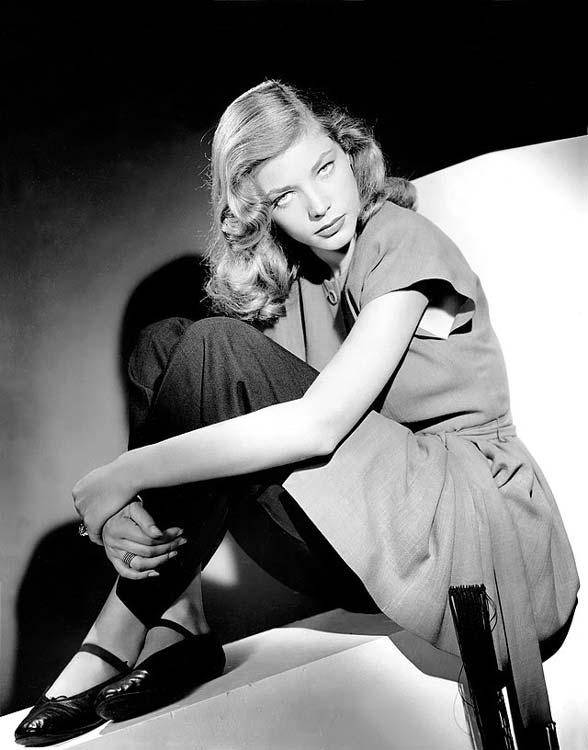
A set of striking eyes, shy but fixed with what Hollywood called “The Look.” The starlet named Lauren was actually born Betty Joan Perske. She fell in love with the theater as a teenager, taking jobs as an usher just to be close to it, but working as a model actually ushered her big break. Bacall’s ‘Look’ came about while filming her first feature opposite Henry Bogart, a function of nerves rather than seduction. Bacall and Bogart married, and the actress moved to Hollywood to live her dream.
Marilyn Monroe (1926-1962)
There can be 50 of the most popular women of all time, but only one Marilyn Monroe. Like other women on this list, Norma Jean Mortenson sacrificed her sanity to entertain, adopting the breathy blonde bombshell aesthetic we remember her for today. As history marches onward, society still finds itself enamored of the individual beneath, broken and afraid, but resplendent through it all.
Maya Angelou (1928-2014)
Maya Angelou lived an unbelievable amount of life, synthesizing her experiences into a five-volume autobiography. Her most famous work, I Know Why the Caged Bird Sings, begins this series. An author, poet, actress, singer, dancer, playwright, director, and producer, Angelou’s work illustrates one identity of a Black woman during the 20th century.
Audrey Hepburn (1929-1993)
“Nobody ever looked like her before World War II,” Cecil Beaton said of actress Audrey Hepburn. Since her arrival on the international stage, countless girls have sought her innocent eyes and demure poise. Billy Wilder said she “single-handedly may make bosoms a thing of the past,” but Hepburn’s figure was the result of hardship. Born in Belgium just before WWII, she grew up amongst starvation, motivating her kindness and humanitarianism for life.
Elizabeth Taylor (1932-2011)
Elizabeth Taylor and her purple eyes offered another follow up to the era of Marilyn Monroe. The blockbuster actress moved from England to Los Angeles as a child during the 1930s. By the next decade, she began appearing in films like Lassie. As an adult, Taylor negotiated a million dollar contract for her role as Cleopatra and went on to launch numerous eponymous brands. She devoted the later part of her work to charity, particularly the AIDs crisis.
Susan Sontag (1933-2004)
This American writer took a serious approach to her work. While Susan Sontag created across multiple written mediums, she devoted most of her career to essays, including her most famous publication, “Notes on ‘Camp,’” the inspiration behind the theme for 2019’s Met Gala. Sontag achieved renown by taking a studious, philosophical approach to culture in her articles and reviews.
Gloria Steinem (1934- )
Few names ring more synonymous with ‘feminism’ than hers. Steinem gained attention for her long hair and chic sunglasses, defying mainstream impressions of feminism with style. One of her first gigs required her to impersonate a Playboy bunny and infiltrate their NYC club. Steinem travelled America on the road, hosting talk circles about empowerment with women from a varied cross-section of society.
Jane Gooddall (1934- )
During the 1950s, not much was known about the inner lives of primates. Gooddall met anthropologist Louis Leakey while visiting Kenya with a childhood friend. taken aback by her ideal temperment, he encouraged her to try studying chimpanzees in isolation,. Gooddall finally got close to a group of chimps after a few years’ work. She learned about their social structures, diet, and capacity for toolmaking, changing the way human beings related to the natural world.
Jane Fonda (1937- )
Jane Fonda was born into a Hollywood dynasty, but she’s nurtured her own ethics while leveraging the benefits she was born into. Today she’s best known for her workout videos, innovative at a time where mass culture was reaching its tipping point. Fonda was also a controversial opponent of the Vietnam War. She maintains this spirit today, fighting for what is right while still pursuing her own happiness.
Wangari Maathai (1940-2011)
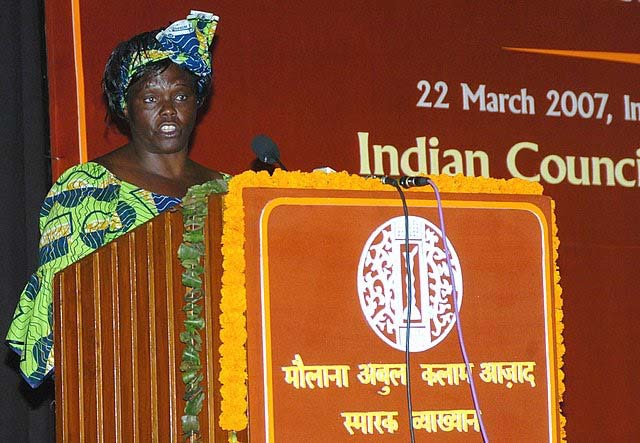
Kenyan environmental activist Wangari Maathai was born while her nation was still a British colony. Maathai studied biology in the United States, where she also learned social lessons taught during the Civil Rights Movement and Vietnam War protests. Maathai returned to Kenya to complete her doctorate in Nairobi and became the first woman in East and Central Africa to achieve the title. She later launched the Green Belt Movement. In 2004 she received a Nobel Peace Prize for her work towards sustainable development, democracy, and peace.
Angela Davis (1944- )
This political activist, academic, and writer has devoted her life to racial, class, and gender equality. Throughout her long career fighting for civil rights, she’s been associated with contentious entities like the Black Panther and Communist Parties, even ending up on the FBI’s Ten Most Wanted list–certainly an exciting way to end up one of the 50 most popular women of all time! Davis continuously fights for prison reform and the greater dismantlement of America’s deadening industrial complex.
Diana Ross (1944- )
This Mowtown mistress was born in Detroit, Michigan. By the 1960s, she formed unforgettable pop/soul trio The Supremes. Ross embarked upon her solo career during the 1970s, amassing a historic amount of #1 hits like ‘Upside Down’ and ‘I’m Coming Out,’ famously sampled in Biggie’s ‘Mo Money Mo Problems.’ Today, Ross still reigns a queen Surpreme.
Marsha P. Johnson (1944-1992)
“I was no one, nobody, from Nowheresville until I became a drag queen,” stated revolutionary LGBTQ activist Marsha P. Johnson. Born in Elizabeth, NJ, Johnson struggled to make sense of her transgender reality alongside her strict Christian upbringing. She moved to New York City and made history on June 28th, 1969 as the alleged instigator of the Stonewall Riots. She and Sylvia Rivera founded the Street Transgender Action Revolutionaries to help homeless transgender youth in NYC.
Dolly Parton (1946- )
What hasn’t Dolly Parton done? The multi-threat may have grown up on a shoestring budget in Appalachia, but she’s enjoyed success in song and film, opened her own amusement park, and even had the world’s first cloned sheep named after her. Parton pens and performs her own songs, even writing two hits (‘Jolene’ and ‘I Will Always Love You’) on the same day.
Debbie Harry (1945- )
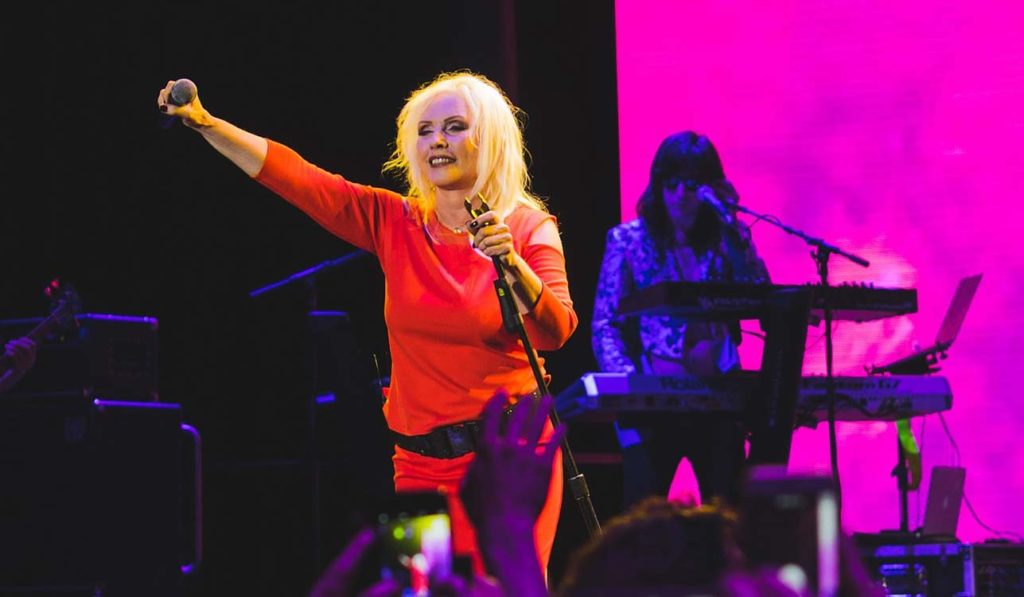
Debbie Harry became an emblem of NYC culture during the vital 1980s. Born in Miami and raised in New Jersey, Harry dropped out of college to try for a career in music. She used her experience working as a Playboy Bunny as she started working at Max’s Kansas City, a downtown club iconic to New York’s music scene. Harry floated between groups until she met guitarist Chris Stein in the 1970s. The two formed Blondie, a hallmark group of the ‘New Wave’ era which served as mainstream ambassador for other artforms like rap and graffiti.
Cher (1946- )
Cher left school at sixteen to seek sustenance from the stage, as her mother always had. Soon after, she unwittingly stumbled upon the love of her life and her first great collaborator: Sonny Bono. The two shared a long and passionate, if not sometimes tumultuous relationship that culminated with their hit TV show ‘Sonny and Cher.’ Their work brought success and expectations–the world mourned Cher’s eventual divorce from Bono. Through adversity, she has always kept her head on her shoulders with style, a famed fashion icon to this day.
Donna Summer (1948-2012)
Hailed as “The Queen of Disco,” this singer secretly auditioned for (and secured!) a role in Hair: The American Tribal Love-Rock Musical before even graduating high school. While in Munich, where the production was based, she met storied producer Giorgio Moroder. Their collaboration invented electronic music.
Stevie Nicks (1948- )
Nicks grew up in a close-knit family who hopped around the American southwest. She enrolled in San Jose State College during their stint in California, and stayed behind after they moved on to Chicago. Nicks and her friend, classmate, and collaborator Lindsey Buckingham made their way together, even opening for Hendrix and Joplin with a short-lived band called Fritz. Through serendipity at their studio, the two signed with Fleetwood Mac, changing music history forever.
Oprah Winfrey (1954- )
Winfrey began her broadcasting career at nineteen, the youngest person and first African-American woman to anchor the news at Nashville’s WTVF-TV. In 1984, she moved to Chicago to host a local morning talk show. In less than a year, the show expanded to an hour and was named after its star. By 1988, Winfrey opened Harpo Studios, becoming just the third woman in history to own her own studio. From her OWN network to magazines and more, she’s still employing her midas touch while uplifting others.
Princess Diana (1961-1997)
Diana, Princess of Wales is well-loved the world over even decades after her death. Lady Diana Spencer inherited her original title in 1975 when her father became Earl Spencer. On July 29th, 1981, she married Prine Charles, heir to the British throne. “The People’s Princess” gave herself to humanitarian interests to offset her overwhelming fame. She and Charles divorced in 1996, and Diana died in a hotly debated car crash one year later.
Jennifer Lopez (1969- )
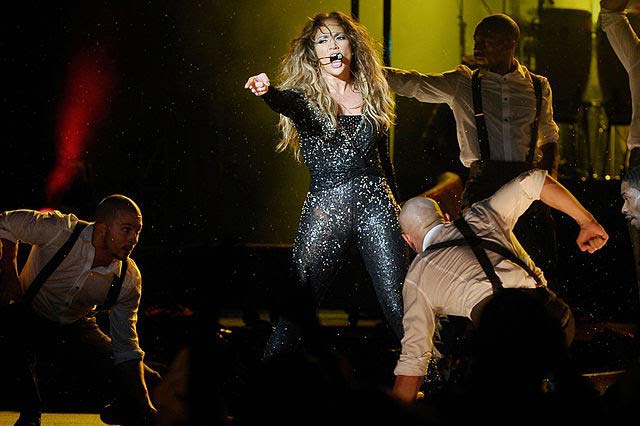
Jennie from the block grew up in the Bronx during its hiphop and breakdancing heyday. Lopez parlayed her early gigs as a dancer into a series of small acting roles before landing her first break, starring as Selena in 1997. Her 1999 hit album, ‘On the 6,’ pays tribute to her hometown subway line and gave us iconic singles like ‘Waiting for Tonight’ and ‘If You Had My Love.’ She’s still keeping the pace today.
Lauryn Hill (1975- )
The legendary Miss Hill gained an early passion for soul music from the 1960s and 1970s. As a teenager, she competed in Showtime at the Appollo and held a role on the daytime television drama As the World Turns. After meeting young Haitian immigrants Pras Michel and Wyclef Jean, the trio formed The Fugees. Their 1996 album The Score became a sensation for its variety, a quality also held by Hill’s 1999 solo album, The Miseducation of Lauryn Hill. After shattering records with multiple Grammy wins, Hill shocked the world by announcing her exit from stardom in favor of a more family and spiritually-oriented lifestyle.
Michelle Kwan (1980- )
Kwan won her first figureskating competition at age seven, just two years after she started skating. Later, blossoming adolescence granted her an increased refinement that helped secure her first US and world titles. She went on to win a silver medal at the 1998 Olympics in Nagano, Japan, and a Bronze medal in 2002 in Salt Lake City. In 2006, she suffered an injury that forced her to skip the games. She skipped the 2010 games of her own volition to earn her law degree from Tufts, transitioning to a life in public service.
Britney Spears (1981- )
Britney Spears began her relationship with an entire generation as an eleven year old on The All-New Mickey Mouse Club. Her first solo hits from 1998 get everyone hype to this day. While Spears’s early work focused on her youthful sex appeal, this move brought commercial success and also personal setbacks. Undoubtedly one of the 50 most popular women of all time, her fans rally behind her at every opportunity.
Beyonce Knowles (1981- )
Beyonce rose to fame as the principal singer of Destiny’s Child, writing hit songs like ‘Bootylicious.’ When the group parted ways, she launched her massively successful solo career and continued to write music. Her breakout album Dangerously in Love won five Grammy Awards. Beyonce commands infinite fame today. Personal strength permeates her brand, which keeps her grounded and focused on work with integrity.
Venus and Serena Williams (1981- )
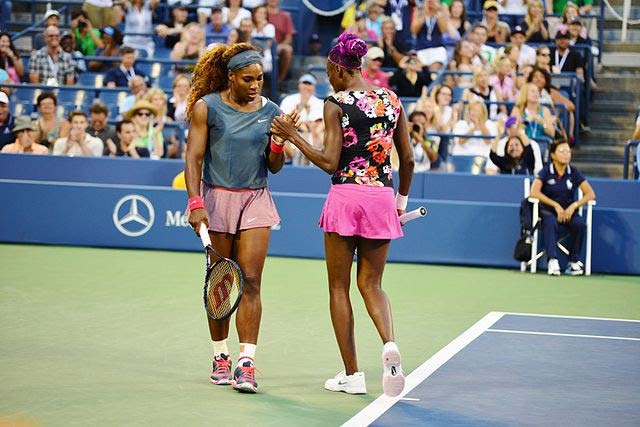
These sisters might be regarded as tennis royalty today, but they began playing on the public courts of Los Angeles. Venus went professional in 1994, and Serena followed the year after. Serena won their first Grand Slam singles title at the US Open in 1999. Her 23 total titles top every female player in the game. She and Venus won gold medals at the doubles event of the 2000 Olympic Games in Sydney. While both are unqiue personalities and players, the sisters’ successes keep breaking boundaries and outdated beliefs.
Rihanna (1988- )
At 33 years old, the Barbados-born superstar has become the youngest solo artist to score fourteen #1 singles on the Billboard Hot 100. She’s sold more than 54 million albums and 210 million tracks worldwide. She just might be, literally, the most popular of the 50 most popular women of all time. She’s expanded her empire to makeup and lingerie, with no signs of slowing down.
Rupi Kaur (1992- )
Indian-born poet Rupi Kaur released her first volume, milk and honey, as a 21 year old university student. She self-published her seminal work to thwart the difficulties of securing a publisher as an unknown talent. Her writing harnesss the social media era, providing solace to readers around the world. Kaur’s simple stanzas have sold over 8 million copies and have been translated into over 42 languages with their gentle contemplations on femininity, migration, love and loss.
Malala Yousafzai (1997- )
The daughter of activists who encouraged her bold voice, Yousafzai became an outspoken critic of the Taliban’s desire to bar young women from education in her native Pakistan. At 15, she survived an assassination attempt. In 2014, she and Kailash Satyarthi were jointly awarded a Nobel Peace Prize for their efforts towards children’s rights. In 2020, she graduated from Oxford University, marking a new chapter for this ubiquitous young symbol of vital, global, feminine empowerment.

